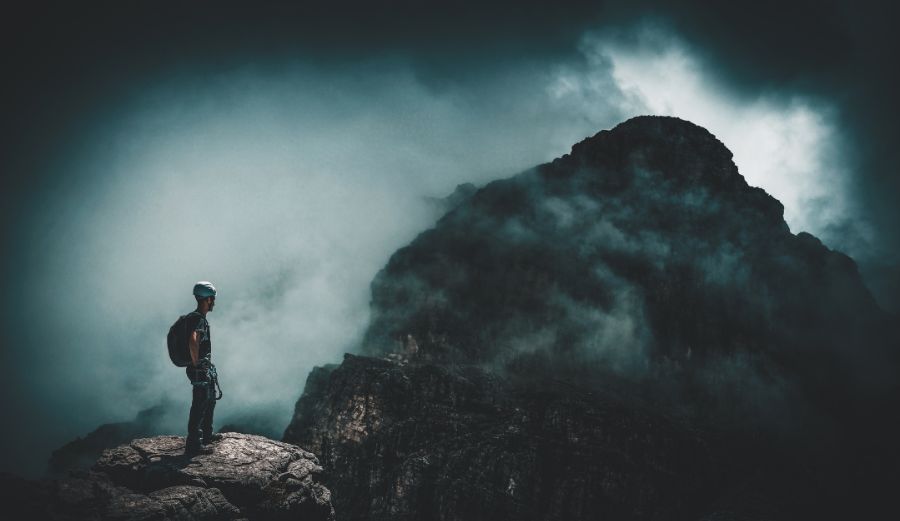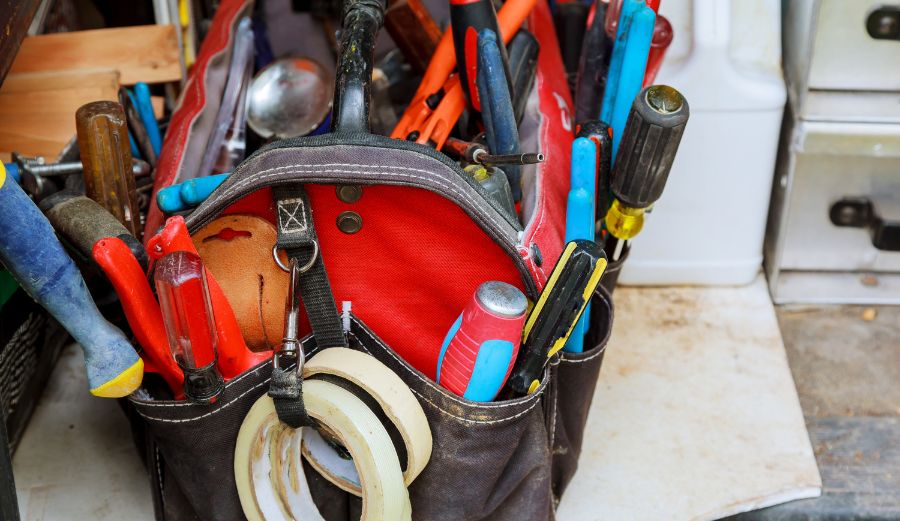Mastering the Art of Travel: The Complete Backpacking Checklist

For adventure-seekers, there’s nothing quite like the thrill of backpacking to soothe the soul. It’s just you, your pack, and the great outdoors — the perfect combination.
When you’re on the trail, you’re completely dependent on the supplies in your backpack. The right items ensure that you stay comfortable, dry, and well-fed for the duration of the trip. What should you bring?
The specifics depend on your planned route, the climate, and the length of the trip. A multi-day hike into the backcountry requires a bigger pack and more supplies than a one-night loop. To help you cover all of the bases for safety, comfort, and nourishment, we’ve created a handy backpacking checklist.
Table of Contents
ToggleWhat To Pack For A Backpacking Trip

No matter where the trail takes you, some backpacking essentials never change. The basics include:
- Sleeping bag and pad
- Backpack
- Lightweight tent
- Hiking boots
- Shoes for camp
- Cook stove
- Cooking fuel
- Dishes and utensils
- Food for the entire trip
- First-aid kit
- Suitable outerwear for the weather
- Basic repair kit for tent, shoes, and backpack
- Hygiene products
- Essential backpacking supplies (see below)
How To Pack Using Our Backpacking Checklist

As you’re getting ready for a backpacking trip, it’s easy to feel overwhelmed. That’s where our backpacking checklist comes in — it helps you keep track of the items you have and what you still need to pack. That way, you can leave the trailhead behind feeling confident.
Print this checklist using our convenient PDF version and keep it near your pack. As soon as an item goes into the backpack, check it off on the list.
Our backpacking checklist is designed for backcountry travel, so it contains everything you need for trips with no resources. It assumes that you won’t have access to the resources of a developed campground.
Gear For Backpacking

The most important step in packing for a backpacking trip is choosing the right backpack. The style and size varies based on your body, but in general, it’s a good idea to choose a model that holds between 30L and 50L. This size is comfortable to carry but gives you enough space for all of the backpacking gear you’ll need. For longer expeditions of three nights or more, look to backpacks with a capacity of 50L or higher.
- Backpack
- Raincover that fits completely over your pack
- Headlamp and/or flashlight
- Spare batteries
- Lightweight tent
- Sleeping bag
- Roll-up sleeping pad (inflatable or foam)
If you have room:
- Small pillow
- Hiking poles
- Ground cloth for the tent
- Portable lantern
Cooking Supplies For Backpacking

Kitchen supplies are some of the most important things to put in your pack. The trick? Choosing items that are designed for backpacking, such as a cooking set with nesting pots and dishes for space efficiency. Your goal is to choose products that are lightweight, multi-functional, and small.
- Cooking set with folding handles
- Compact stove (look for backpacking models)
- Portable fuel canister for stove
- Utensils
- Plates and bowls
- Cup
- Container for food (bag and a cord for hanging)
- Bear-proof food canister (in bear country)
- Biodegradable camp soap
If you have room:
- Camp towel
Food For Backpacking

When you’re planning a backcountry trip, food is a crucial consideration. Backpacking is an intense physical activity, so your body will need more calories than normal. Look for snacks and foods that are calorie-dense and non-perishable: nuts, seeds, dried jerky, and pre-packaged protein bars are all good options that you can grab quickly during a hike.
For dinners in camp, dried staples like pasta, rice, tuna packets, and dehydrated beans are lightweight and easy to prepare using water. Plus, they provide the carbs you need for energy. In most cases, it’s a good idea to pack more than you think you’ll need — that way, you have enough to sustain you in case you get lost, injured, or trapped by bad weather.
It’s also important to think about water. Pack containers that are large enough to hydrate you between water sources. Your specific needs will vary based on the weather, but .5L per hour is a good rule of thumb in temperate climates.
- Water purification tablets/drops or a water filter
- Water bottles
- Collapsible water container for a hydration pack
- Snacks for the trail
- Supplies for breakfast, lunch, and dinner
Backpacking Apparel

Clothing plays a big role in your comfort and safety during a backpacking trip. To start, consider the weather forecast and the general seasonal patterns.
It’s always a good idea to have gear for rain. Keep in mind that even in hot climates, temperatures can drop dramatically after dark; be sure to bring a warm layer for evenings in camp.
You may have heard the saying “cotton kills” — that’s because it’s highly absorbent and slow to dry. In cold weather, this can lead to hypothermia. A better option is to choose fabrics like wool and silk, which insulate more effectively; in hot weather, look for technical fabric that wicks away sweat and dries quickly.
- Pants or shorts
- T-shirts or tank tops
- Socks and underwear
- Light long-sleeve layer
- Weather-appropriate soft jacket (fleece or softshell)
- Waterproof rain shell
- Boots (for rough terrain)
- Shoes (for flat/well-maintained trails)
- Camp shoes or flip-flops
For Cold-Weather Backpacking:
If you’re taking a winter backpacking trip, or you’re heading out during the early spring or late fall, you’ll need additional items to prepare for the weather. Keep in mind that conditions can change unexpectedly, particularly during the shoulder seasons — by taking more warm and waterproof items than you think is necessary, you’re less at risk for exposure, hypothermia, and frostbite.
- Gloves
- Winter hat
- Thicker jacket
- Cold-weather base layer shirt and pants
- Fleece or wool pants
- Rain pants
- Leg gaiters
- Neck gaiter
Supplies For Navigating On The Trail

Even when you’ve planned a route carefully, it’s possible to stray from the correct trail or lose your way. When that happens, it’s helpful to have the tools you need to navigate back to safety. Don’t forget to brush up on your orienteering skills before you hit the trail; a compass is only useful if you know how to operate it.
We also suggest that you give a copy of your route to a loved one and leave one in your vehicle at the trailhead. That way, if you don’t check in as planned, they know where to look. In an emergency situation, this can save valuable time for searchers.
- Trail map
- Compass
- Description of local topographic features
If you have room:
- Watch
- GPS unit
- Extra batteries for the GPS
- Satellite phone
First Aid, Safety, And Emergency

Emergencies happen, even for the most experienced backpackers. Whether you’re dealing with a bad scrape or a more serious injury, the right supplies help you keep going.
If you have space, consider taking along a small wilderness first aid guide; it can help refresh your memory when it comes to splinting, tourniquets, and other procedures that you don’t use frequently.
- Bear spray (if the location requires)
- Basic wilderness first-aid kit
- Blister treatment
- Painkillers
- Emergency blanket
- Whistle (to alert passersby or rescuers in case of an accident)
- Locator beacon (to help rescuers find you)
- Extra fire-starting supplies (in a waterproof package)
Backpacking Hygiene Supplies

Hygiene is a big consideration when you’re in the backcountry; the right supplies help you take care of business while protecting the natural environment. Everyone’s needs are different, but some common supplies are:
- Camp soap or hand sanitizer
- Digging instrument for a Leave No Trace latrine
- Toilet paper
- Plastic bag to pack out used toilet paper
- Personal needs: glasses, necessary medications, feminine hygiene products
Weather And Environmental Protection

During a backpacking trip, you’re naturally more exposed to the elements than in your day-to-day life. As you pack, consider the terrain, the weather, and other natural factors. In Alaska in July, for example, a mosquito face net is a must; in Utah in the summer, a sun hat will serve you well.
- Sunscreen
- Lip balm with SPF protection
- Hat with brim
- Sunglasses
- Mosquito face net (depending on location)
- Insect repellent
Tools And Repair Supplies

Backpacking gear undergoes a great deal of stress. In case of a broken backpack strap or a punctured sleeping mat, it’s helpful to have a few tools and supplies along for a quick fix.
- Repair kit (for stove, inflatable sleeping pad)
- Sewing kit (for backpack, clothing, shoes)
- Extra cord (for tent, bear bag, shoelaces)
- Multi-tool or folding pocket knife
- Duct tape
Personal Necessities

Be sure to keep these items on you rather than in your car.
- Backcountry hiking and camping permits
- Photo ID card
- Car keys
- Phone
- Battery pack or solar charger
- Cash or a credit card
Optional Extras For A Backpacking Trip

Do you still have space in your pack? These items can make your trip more fun and comfortable.
- Book, magazine, or e-reader
- Weather-resistant camera
- Field guide to the local area
- Playing cards
- Collapsible daypack
- Binoculars
- Journal
- Star chart
